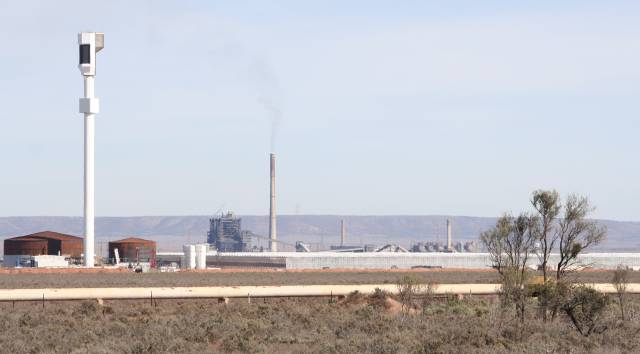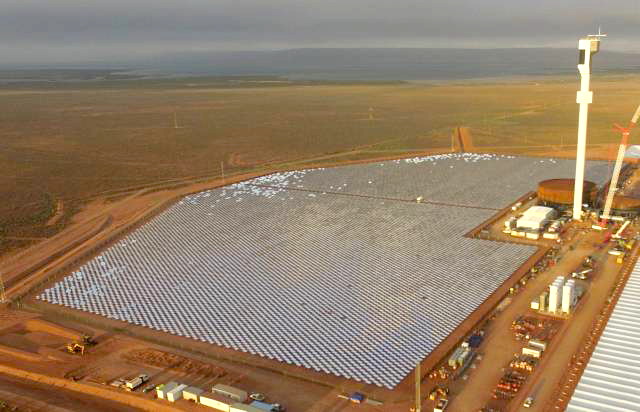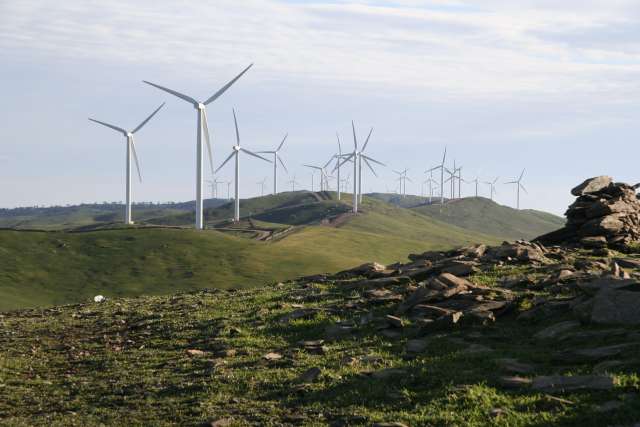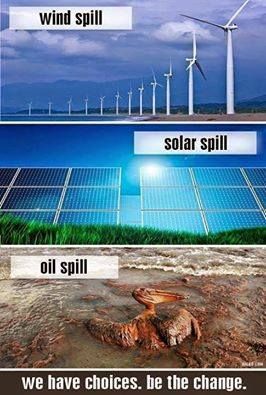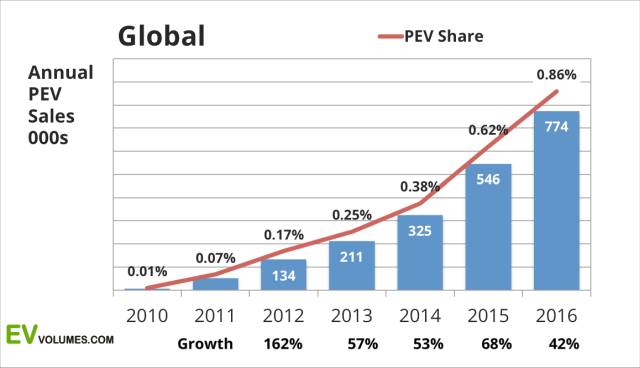Coal- and gas-fired generation could be made less environmentally damaging if we were willing to pay far higher prices for our electricity.
In practice geosequestration of the carbon dioxide emissions of fossil fuelled power stations had been shown to be far too expensive to be acceptable to anyone.
|
What variables are involved?
The options are discussed below; follow the links.- Cost
- How do the different technologies compare?
How do the different forms of each technology vary in their costs?
- Environmental impact
- No power-generation technology is without environmental impacts, but some
are much more harmful than others.
- Availability
- The main renewables are only available when the wind blows or when the
light is bright.
Coal and nuclear are good for
base load, but are inflexible and not
suited for covering
peak loads.
Some forms of gas-fired generation are better for peak loads than others.
- Energy storage
- It is possible to store energy when it is plentiful for use in times of
high demand or low generation.
- Sustainability
- Do the technologies depend on finite resources?
- Acceptability to the community where they will be built
- Will the people where the power generation station is to be built be
accepting, or will they resist?
- Health and safety
- Will the power station pose a risk to the local community?
Will it release dangerous particulate material into the air?
If targeted by terrorists or by an enemy in war time, will there be a
particular addition risk to the local community?
- Development time
- Solar PV can be built very quickly, wind farms and gas fired power stations
require two or three years, coal perhaps five years, nuclear 15 years or more.
- Electric vehicles and Demand-side-management
- EVs and DSM will make a huge difference to peak demand on the power grid, the time of day the demand comes and on the ease of introduction of higher proportions of renewables.
I have discussed a number of these questions in relation to the world in general in another page on this site: The pros and cons of various methods of generating electricity. On this page I will try to compare their desirability for Australia.
|
|
|
Costs of the available options
The graph on the right shows costs of electricity generating technologies as published by the World Energy Council in 2013. The blue bars on the graph show the range of costs for the various technologies, the blue circles show the typical cost of each technology in 2012, while the orange circles are for a year later.Note that the graph shows that solar PV costs fell substantially between 2012 and 2013; since the compilation of this graph they have continued to fall. Wind power costs in Australia have fallen substantially since 2013 (and were still falling in 2019).
In regard to the graph, the cost of coal- and gas-fired power is very dependent on the local cost of coal and gas, which may differ substantially from one country to another.
A solar thermal power station to be built in South Australia by 2020 that is contracted to sell power to the state government at a maximum of $78/MWh seems to cast doubt onto the graphed cost of solar thermal energy generation (STEG).
In the end the wholesale electricity price is dictated by supply and demand
In the National Electricity Market (NEM), that serves the eastern states, the wholesale price of electricity is set at frequent intervals depending on bids from the power generators. If there is a lack of competition in a segment of the market at a particular time, prices can go much higher than the cost of generation.Cost of coal-fired power
|
|
|
Ms Molyneaux wrote that even this would not reduce emissions sufficiently to meet Australia's target; that would require the addition of carbon capture and storage, putting the price of electricity up to $155/MWh (US$117).
A few days later (2017/02/03), Bloomberg New Energy Finance, as reported in RenewEconomy, announced the following research:
"The research puts the Levelised Cost of Energy (LCOE) of a new ultra-supercritical coal-fired power station in Australia at $A134-203/MWh; significantly higher than the LCOE of new-build wind at $A61-118/MWh), solar $A78-140/MWh or combined-cycle gas at $A74-90/MWh."See the graph on the right.
A coal-fired power station has a typical life of up to 50 years. No coal-fired power station built today will be allowed to continue to burn coal for 50 years, because of climate change. Wind and solar PV are already very economically competitive to coal, their costs are continually declining; a new coal-fired power station will quite probably be economically unviable in ten years. For these reasons, independent financiers are not interested in financing coal-fired power stations.
Subsidised coalCoal-fired power is effectively hugely subsidised in Australia because the very harmful waste gasses can be dumped into the atmosphere at no cost to the operators of the power stations. |
Cost of gas-fired power
| ||
| ||
|
Then there are peaker plants (usually open cycle gas turbines, OCGT); quoting Wikipedia:
"A peaker plant may operate many hours a day, or it may operate only a few hours per year, depending on the condition of the region's electrical grid. Because of the cost of building an efficient power plant, if a peaker plant is only going to be run for a short or highly variable time it does not make economic sense to make it as efficient as a base load power plant."According to Wikipedia, new peaking gas generators are typically 30 to 42% efficient. OCGTs have low capital costs but high fuel costs. Operators generally have to charge more for the electricity from OCGTs than from CCGTs because of the shorter times that the former are run and their higher fuel costs.
An important factor in the cost of gas-fired power in Australia has been the increase to gas prices that occurred when compressed natural gas (CNG) started to be exported. Before export, Australia's natural gas was cheaper than the global price; following the establishment of the export industry, Australia's price rose to equal the global price.
In Australia, gas-fired electric power is typically more expensive than coal-fired electric power. South Australia's electricity prices are generally higher than other states because SA has a high percentage of electricity generation by gas.
Lynette Molyneaux' research, discussed under cost of coal power, above, in regard to emissions also applies to gas; to minimise emissions from gas-fired generators carbon capture and storage would have to be used, and that would greatly increase the cost.
Subsidised gasGas-fired power is effectively hugely subsidised in Australia because the very harmful waste gasses can be dumped into the atmosphere at no cost to the operators of the power stations. |
Cost of nuclear power
|
|
|
The very small probability, but colossal costs, of disasters such as with Fukushima should be taken into account with costing; as should the possibility of a nuclear power station becoming a target for terrorists or of enemies in war-time.
Cost of solar PV power
As suggested on the graph above, the cost of solar PV power is decreasing steaply. In early 2017 I believe that it was comparable to the cost of power from conventional new-built coal-fired power stations and wind power.
I inquired regarding the feed-in tariffs for the Australian Capital
Territory's (ACT's) large-scale solar auction conducted in 2012 and 2013.
On 2017/02/09 I received the following in an email from Dr Greg Buckman,
Senior Policy Officer, Energy Markets and Renewables; Environment, Planning
and Sustainable Development Directorate, ACT Government.
"The [contracted] feed in tariff prices were:
- FRV Royalla Solar Farm Pty Ltd: $186/MWh;
- Zhenfa Canberra Solar Farm One Pty Ltd: $178/MWh;
- OneSun Capital 10MW Operating Pty Ltd: $186/MWh."
Cost of solar thermal power
As mentioned above, a solar thermal power station to be built in South Australia by 2020 is contracted to sell power to the state government at a maximum of $78/MWh. This seems to contradict the much higher prices shown on the graph, above, giving costs of energy technologies.Cost of wind power
AGL have contracted a price of $65/MWh (US$49) in January 2017 for emissions-free power to be generated by the proposed Silverton Wind Farm. More information on recent wind power price agreements in Australia are available on another page on this site.|
|
Environmental impact
|
Environmental impact: Coal
The burning of coal is one of the main causes of Climate change and ocean acidification.Coal mining damages huge areas of land; greater than any other single form of mining. The rehabilitation of abandoned coal mines is problematic, enormously expensive, and rarely restores anything like the original land condition. Similarly, the ash dumps at coal-fired power stations are difficult and expensive to rehabilitate. (For example, Port Augusta power stations.)
The very substantial health and safety impacts of coal are dealt with elsewhere on this page.
Environmental impact: Gas
A gas-fired power station releases large amounts of the greenhouse gas carbon dioxide into the atmosphere. While the amount of energy yielded per tonne of carbon dioxide released is only around half that for a coal-fired power station, this is not the whole story. Natural gas is mostly methane, which is a much more potent greenhouse gas than carbon dioxide. Any leakage (and there is bound to be some) of methane into the atmosphere, at any stage in the exploration, extraction, transport, or burning of the natural gas will add to the climate change problem.The fracking that is often used in extraction of natural gas could easily lead to leakage, as well as contamination of aquifers.
Environmental impact: Solar
The manufacture of solar panels, as with the manufacture of almost anything, has environmental impacts, but once in place there is very little impact other than shading.How recyclable solar panels are at the end of their useful life is questionable.
Environmental impact: Wind
Wind turbines are large machines, their manufacture has similar impacts as the manufacture of any machines. Once in place, they have some impact on local weather by slightly slowing the wind – they increase the 'surface roughness' of the land in relation to the wind passing over it.|
|
Availability
|
Base-load, peaking and renewables
|
The Australian right-wing media and Coalition political parties try to give the impression that there are two types of power station: base-load, and second-rate.
This is quite misleading.
|
The ideal power station would be available all the time, would produce low-cost emission-free electricity, and would be able to increase and decrease its generation quickly to follow the variation in demand. The ideal power station does not exist.
A 'base-load' generator is one that is best suited, for either economic of practical reasons, to run at near full capacity all or most of the time.
A 'peaking' generator is one that is able to come on-line at short notice to cover periods of high electricity demand; at 'peak' times. Hydro-power can supply peak demand, within the limits of the availability of stored water. Some types of gas-fired generators are very well suited for peak-power; more on them below.
Wind and solar PV, the dominant new renewables at the time of writing, only generate power when the wind blows or the sun shines.
Coal and nuclear are generally classed as 'base-load' forms of electricity generation.
Gas-fired power stations come in several varieties. The cheaper and less efficient ones are valuable in being able to vary in their amount of generation to suit the varying demand of the electricity grid; this is called 'peaking power'. Those that are the most energy efficient need to be run a large proportion of the time to justify their high capital cost; they are more 'base-load'.
Wind farms, of course, are available only when the wind blows.
Solar PV installations generate only during daylight hours, and are most productive on clear, sunny days.
Solar thermal with storage can supply power well after the Sun has moved too low into the sky to produce much power from solar PV panels, or has sunk below the horizon. It has the potential to supply the big late afternoon and early evening peak power demands of Australia's hot summers.
Wind and solar power, because they are not available on demand; as well as coal and nuclear, because they are inflexible, need to share the power grid with flexible power generation systems, such as gas, hydro or energy storage, that can quickly respond to changes in demand.
|
|
Energy storage
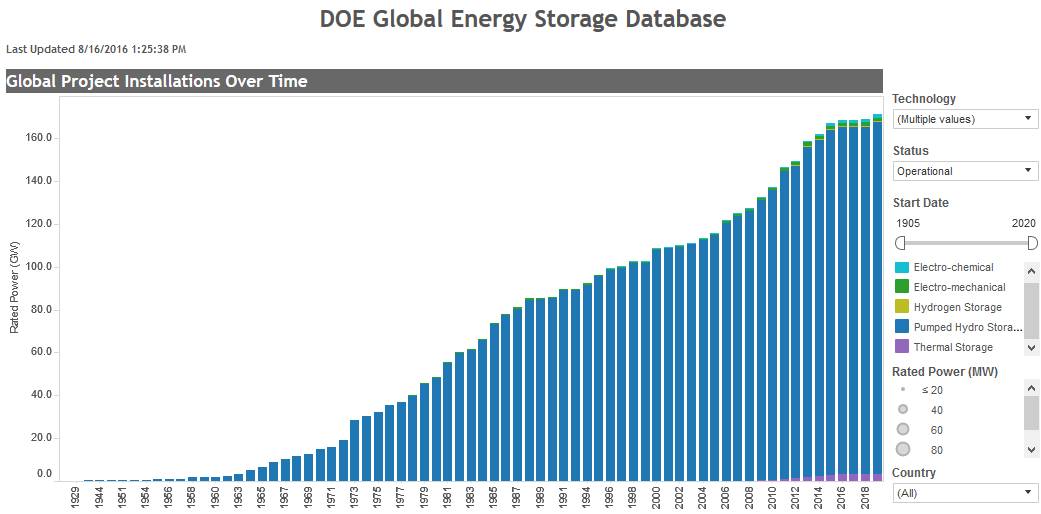
|
Graphic credit US DOE Global Energy Storage Database, Data Visualization
There has been a huge amount of recent talk and development of battery power storage. My main reason for displaying this graph is to highlight the fact that in 2017 the vast majority of power storage in the world was in pumped hydro. The big question is, what technology will the majority of future energy storage take? |
|
The CSIRO published a study 8th July 2015 into energy storage for the Australian Energy Market Commission. The study dealt mostly with various battery technologies. It mentioned that pumped hydro storage was used mostly for bulk storage of large amounts of electricity for periods of hours to days, while batteries were for storage periods of seconds to hours. The CSIRO document listed the main energy storage installations in Australia; it is interesting to note that the largest battery storage installations were around 3 MW (but this is changing quickly), while the pumped hydro systems were far bigger:
- 500 MW, Wivenhoe Qld;
- 240 MW, Bendeela and Kangaroo Valley NSW;
- 302 MW, Great Lake Tasmania; and
- 1500 MW, Tumut River (Talbingo Dam) NSW.
Australia will need to develop sizeable energy storage if renewable energy is to be exploited fully.
Substantial amounts of battery storage are starting to be incorporated into proposed wind and solar power projects in Australia, for example, Crystal Brook Energy Park includes 160 MWh of battery storage.
Battery-grid integration
Development of demand-side-management in the power grid, the increasing installation of household batteries and the replacing of fossil-fuelled vehicles with electric vehicles (EVs) will have a strong impact on the need for, and availability of, energy storage.In the near future there will be wind farms with batteries, homes with batteries, EVs with batteries, solar PV farms with batteries, solar thermal power stations with energy storage, and pumped hydro. There is every reason to believe that all of these should be able to interact – in both directions – with the grid. For example, if electricity has a variable price according to its abundance at any particular time the owner of a home battery or EV battery should be able to buy electricity at a time of high-availability and low price and sell it back to the grid if limited generation produces a high price.
Power to hydrogen
It is possible to use excess electricity to convert water into hydrogen and oxygen. The hydrogen can be stored and later used as an energy source. This is discussed on another page on this site.|
|
Sustainability: do the technologies consume resources that are finite?
Coal and gas fired power generation consumes fossil fuels that are finite natural resources. Coal and gas are not sustainable.Nuclear power stations use a form of uranium (U235) that makes up only 0.7% of all natural uranium. Some nuclear reactors that are not yet proven to be commercially viable also use the bulk of the remaining uranium (U238). Uranium is not a renewable resource; nuclear power is therefore not sustainable.
Wind, solar PV, solar thermal, wave power and biofuels all use fuels and materials that are either unlimited (sunshine, wind, waves) or renewable (agricultural or silvicutural crops). Most of the materials used in construction can be recycled. These technologies are substantially sustainable.
There is a note on the sustainability of batteries elsewhere on this page.
|
|
Acceptability to the community in which they will be built
|
Acceptability of coal mining and coal-fired power stations to the local community
I doubt that anyone would claim that there is anything attractive about a coal-fired power station, even less a coal mine. There are proven health problems associated with nearby coal mines and coal-fired power stations; this is well known and makes coal mines and coal-fired power stations undesirable neighbours.Well informed Australians know that if we are to effectively act on climate change and ocean acidification we should not be opening more coal mines or building new coal-fired power stations.
Recent Australian history shows that people will strongly resist the establishment of new coal mines.
Acceptability of gas
A gas-fired power station is unlikely to face much, or any, local opposition. They are seen as benign.However, a project to search for, or extract gas, especially if fracking is involved, is a very different matter. Anyone proposing this would expect determined local opposition.
Acceptability of nuclear power stations
|
The people in any area where a nuclear power station is proposed can be expected to know, or to quickly be informed, that Australia does not need nuclear power stations; we have ample untapped renewable energy resources.
Acceptability of solar power stations
There is very little history of local objections to the building of solar power stations in Australia. The only case that comes to my mind was at Uriarra in the Australian Capital Territory; the solar farm that was to be built at Uriarra was eventually built at Williamsdale instead.Acceptability of wind farms
Some people don't like the look of wind farms. A person who lives within one or two kilometres of a wind turbine will hear it at some times; some people will find the sound objectionable. Objections based on these and a few similar points are quite reasonable.There was little, if any, opposition to wind farm construction in Australia until about 2008. Since then a small number of vocal people have spread largely unjustified concerns about health, noise, land values, fire-fighting implications and other things. These unjustified and often dishonest fear campaigns, from organisations such as the Heartland Farmers on South Australia's Yorke Peninsula, have, not surprisingly, been effective in increasing fear, concerns and opposition among local people.
Proposals to build wind farms have been blamed for causing social conflict, but the fact is that there was no social conflict until the vocal and dishonest opposition became active.
|
|
Health and safety
|
Health and safety: Coal
A World Health Organisation report, 2012, summarised in The Guardian, stated that air pollution was the world's single biggest environmental health risk, killing seven million people each year. Coal is one of the main causes of indoor and outdoor air pollution; there can be little doubt that it is responsible for a substantial proportion of those millions of people killed each year.Recently it has been recognised that black lung disease, coalworker's pneumoconiosis, has been harming workers in the coal mining industry for many years. (Medical Journal of Australia, coalworker's pneumoconiosis.) "Coal miners die and suffer more lost time from injuries than all other miners"; Clinical Focus, September 2011.
There are general dust problems with health implications in coal mining, transportation and burning; and following the closure of the Northern Power Station at Port Augusta, South Australia, there have been major problems with dust blowing from the ash-fields, which were kept wet while the power station was operating, but have dried out since (late 2016, early 2017).
Health and safety: Nuclear
Nuclear power is safe – most of the time. Three Mile Island, Chernobyl and Fukushima showed that when it goes wrong it can be disastrous. In December 2016 the ABC reported that the Fukushima clean-up would cost Japan Aus$250 billion. The Japanese people were going to face increasingly large electricity bills to cover the costs, and it was expected to be a significant burden on the Japanese economy for many years. And then there are the costs to the people and environment that you can't put in dollars.A nuclear power station would be a tempting target at time of war or by terrorists. A nuclear bomb contains radioactive material measured in kilograms; a nuclear power station contains radioactive material measured in tonnes.
Health and safety: Solar
Solar power, both solar PV and solar thermal, have no special health and safety risks, beyond those such as working at heights and risks that might be encountered in many industries.Health and safety: Wind power
A few people have been killed in the building of the world's several hundred thousand wind turbines. The mining of rare-earth minerals that are used in the magnets in at least some wind turbines and many other places has been carried out with little care for health in China.There is no evidence that wind farms harm the health of people who live in the vicinity or of workers in the industry.
Health and safety: Wave, Biofuel
Workers on wave power projects are working on a developing technology in exposed sea water; there are obvious risks.Biofuels have the potential to cause air pollution from the combustion products if these are not carefully handled.
|
|
Development time
|
Planning and development of a nuclear power station is a notoriously lengthy process; a minimum of 15 years is typical. And there can be expected to be determined objections from the local people, especially in Australia, where there are at present no nuclear power stations; this will slow the process even more.
A solar PV installation will most likely be on a single rural property; little time is needed for negotiating with land owners. It is unlikely to cause substantial local objection or concern from the local council. The parts required are pretty standard and commonly available. Development time will be less than for most power station types.
A wind farm typically takes around three years from a determined proposal to construction so long as finance is available. Many wind farms have been proposed with little reason to expect that financial support will be forthcoming. A legal challange may delay construction.
|
|
Electric vehicles
|
The very pro-fossil-fuel Abbott and Turnbull federal governments in Australia, which have been in power since September 2013, have done nothing to facilitate the introduction of electric vehicles. Australia is lagging behind the rest of the world in the change over from internal combustion engine (ICE) powered cars to EVs.
The graph on the right shows a growth rate in sales of EVs of 42% in 2016. It is simple to calculate that if this growth rate was to continue all vehicles would be electric by about 2030. If the growth rate was to fall to 30% a third of all vehicles would be electric by 2030.
The amount of electricity required to fully charge an EV depends on the model but is around 20 kWh. A typical daily top-up charge might be around 7 kWh. According to the Australian Bureau of Statistics average daily household elecricity consumption (2013) was around 18 kWh. Plainly, if this increases by another 7 kWh, to 25 kWh (about a 40% increase) in even a half of households, there will be a big impact on total power consumption.
There is very good reason to believe that a large part of the commercial vehicle fleet will also change from ICE to electric. Already in China, the world's biggest market for electric vehicles, a third of the total electric vehicles sold in 2016 were commercial (mainly busses).
Demand-side-management
In early 2017 there were signs that demand-side-management (DSM) would be gradually introduced into the operation of the power grid. In the past electrical consumption varied in a way that was largely independent from the potential power availability; this meant that some generators had to be ready to suppy peak power demand periods whenever they occurred. DSM would use price signals to better match times of high power consumption to times of high power availability. DSM will reduce peak power demand and that will reduce the need for expensive upgrading of the power transmission system and so decrease the cost of electricity.Daniel Silkstone wrote for ARENA Wire about demand side management on 2017/09/08.
EVs and the power grid
Electric vehicles fit in very well with demand-side-management of the power grid; they can be charged at whatever time of the day or night there is a high availability of elecricity. It is even possible that owners of EVs will be able to sell power to the grid, at advantagious prices, when there is high power demand and low generation.Wind power in particular will fit into a grid including EVs and DSM; they tend to produce more power overnight – fitting in well with charging EVs – than during the day.
|
|
Continuing need for a power grid
There has been speculation that as solar power becomes more common all power will be generated where it is needed and there will be no need of the power grid. I find this argument highly unconvincing:- Wind and hydro power are the main sources of renewable energy in 2017; they cannot practically be generated at the point of power consumption;
- It is quite impractical for heavy industrial consumers of power to be supplied by local renewables, there would not be space for the needed solar panels and the necessary electricity storage would be cripplingly expensive;
- The power grid can efficiently move electricity from where it is readily available to where it is needed – both of which vary with time; the power grid gives flexibility;
- The places where solar, wind and hydro power are most readily available do not correspond to the places with the greatest power demand.



